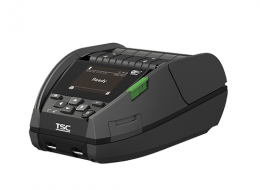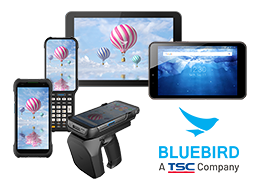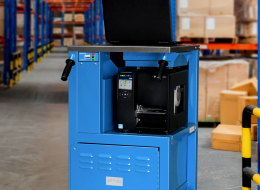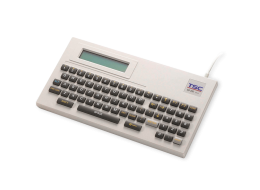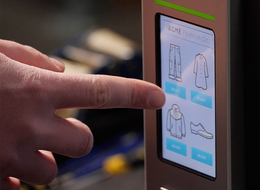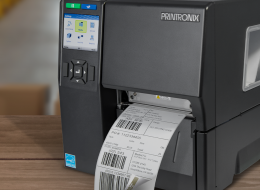Scrupulous Cleaning is the Key to Prevent Healthcare Associated Infections (HAIs)

A recent study from the CDC (Centres of Disease Control and Prevention) shows that the incidence of healthcare associated infections (HAIs) was elevated during periods of high COVID-19 hospitalisations; in 2021, standardised infection ratios were significantly higher than during the pre-pandemic period.1 HAIs are easily transmitted through medical devices during treatments, and bacteria are the most common cause. According to study,1 in 31 hospital patients acquired at least one HAI while hospitalised.2 Worryingly, HAIs may lead to morbidity and mortality. In fact, around 10% of the patients who became infected by an HAI in the course of the research process died during their hospitalisation.3 Prevention and control of HAIs is vital for patient safety, and preservation and maintenance of a hygienic environment is the key factor in reducing HAIs.i
Preventing HAIs: Conduct Regular and Frequent Cleaning and Disinfection
Hospital surfaces are regularly contaminated with numerous pathogens, some harmful, through direct contact with patients or staff. Therefore, thorough cleaning is the key to maintaining a safe, clean and hygienic healthcare environment, and is the top priority when it comes to preventing and controlling HAIs. Following the pandemic, hospitals retained some of the infection control procedures used, and staff, as well as the wider public, are more aware of the importance of cleaning and disinfection in minimising the spread of infections. Moreover, HAI prevention practices could save an estimated $25-$31.5 billion in medical costs.4
Making the prevention of HAIs one of its top priorities, TSC Auto ID has launched the Alpha-30LHC: a healthcare-tailored mobile label barcode printer
Long-term Antimicrobial Efficacy
The Alpha-30LHC’s casing has built-in antimicrobial technology, instead of just the industry-standard surface coating. Following the ISO 22196 standard, it is tested against E. coli, Staphylococcus aureus, and Staphylococcus aureus (𝖬𝖱𝖲𝖠). Antibacterial infusion provides better protection than surface coating because it offers far greater resistance to the kind of wear and tear encountered in a fast-paced environment, offering greater durability and the ability to handle a wide range of healthcare applications.
Expediting the Routine Cleaning Procedure
Hospitals need to follow fundamental steps for cleaning and sanitising, so choosing the most appropriate tools and products is essential to the process. Common cleaning products such as Alcohol, Hydrogen Peroxide and Sodium Hypochlorite can be used on the Alpha-30LHC, allowing healthcare staff to work with products they are already familiar with and which are easily accessible, making the process highly efficient. For a workforce that is often exhausted, either from their high workload or the stress of their position, creating a product so quick and easy to clean is one more way that TSC Auto ID is aiding in the fight against HAIs.
On the Move for Any Necessity
Healthcare professionals are always on the move, and need to be prepared for emergencies. This makes having a mobile printer essential for all healthcare environments. With a rugged design that protects it from drops of 1.8m and tumbles from 1.0m, Alpha-30LHC meets MIL-STD-810G military standards for drop and vehicle vibration, making it ideal for healthcare professionals on the go. It has built-in Wi-Fi and MFi Bluetooth® 5.0 with NFC tap-to-pair offering the straightforward, seamless connectivity that is essential for a fast-paced healthcare setting.
If you'd like to test drive our healthcare tailored 3-inch Mobile Label Barcode Printer, contact our sales representatives for more information.
1 CDC Study: Rate of Nosocomial Infections in Nation’s Hospitals Increased During the COVID-19 Pandemic. (2023) https://www.darkdaily.com/2023/06/26/cdc-study-rate-of-nosocomial-infections-in-nations-hospitals-increased-during-the-covid-19-pandemic/
2 Centers for Disease Control and Prevention. (2020). Healthcare-associated infections. CDC. https://www.cdc.gov/hai/data/index.html
3 Strategies to Prevent Healthcare-Associated Infections: A Narrative Overview. Risk Manag Healthc Policy. (Haque M, McKimm J, Sartelli M, Dhingra S, Labricciosa FM, Islam S, Jahan D, Nusrat T, Chowdhury TS, Coccolini F, Iskandar K, Catena F, Charan J., 2020) https://www.ncbi.nlm.nih.gov/pmc/articles/PMC7532064/
4 Healthypeople.gov. (2020). Healthcare-Associated Infections. https://wayback.archive-it.org/5774/20220413183205/https://www.healthypeople.gov/2020/topics-objectives/topic/healthcare-associated-infections
i Knowledge and perception of nosocomial infections among patients in a Nigerian hospital.(Oni, O., Orok, E., Lawal, Z. et al., 2023) https://www.nature.com/articles/s41598-023-47661-0

